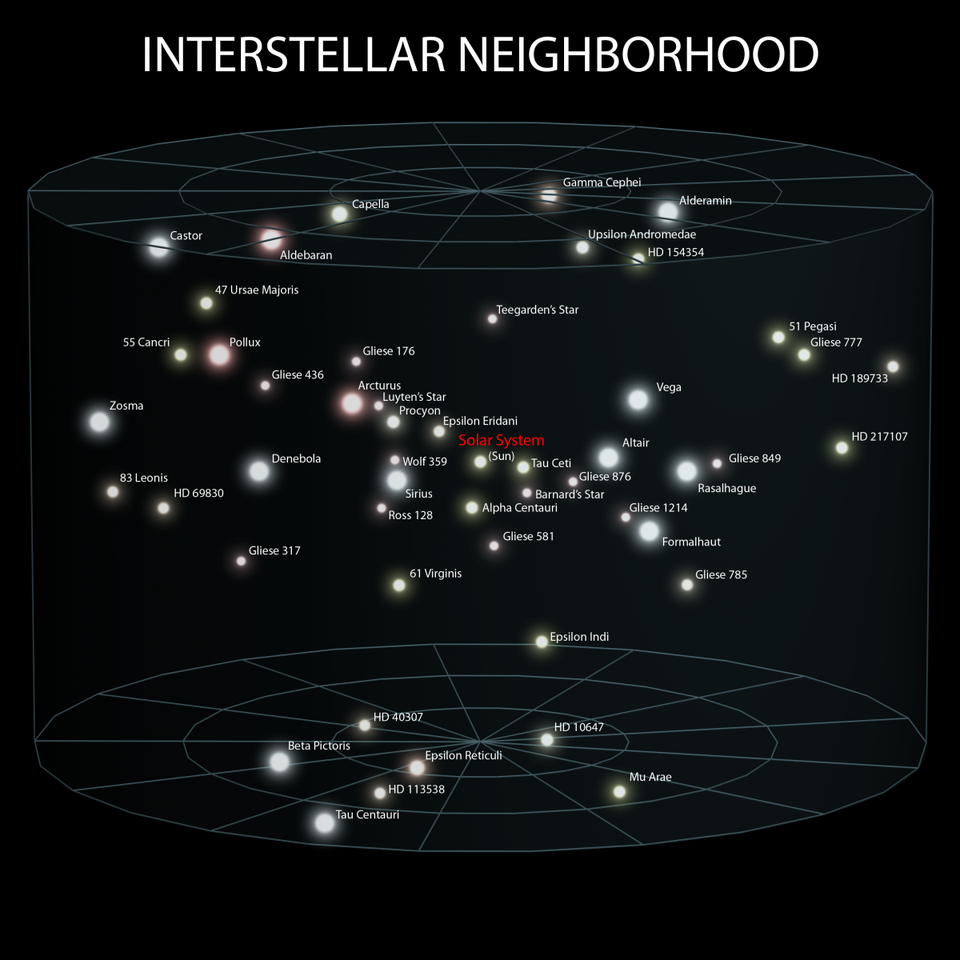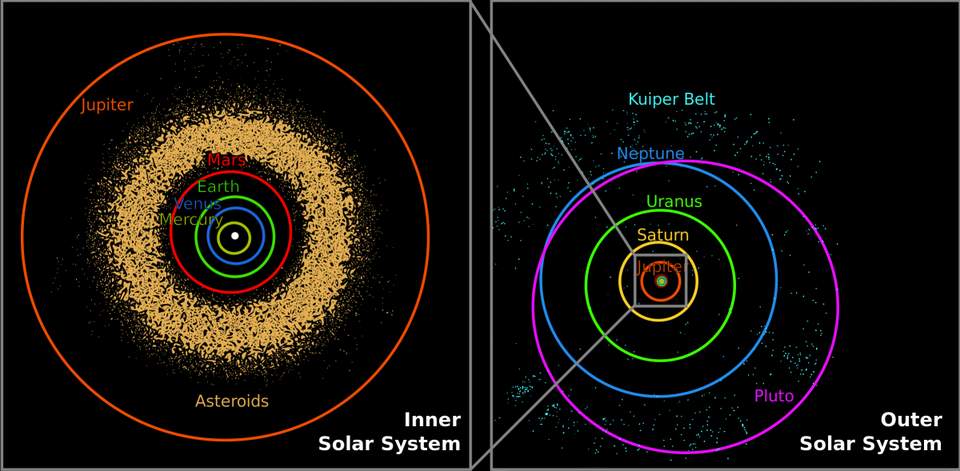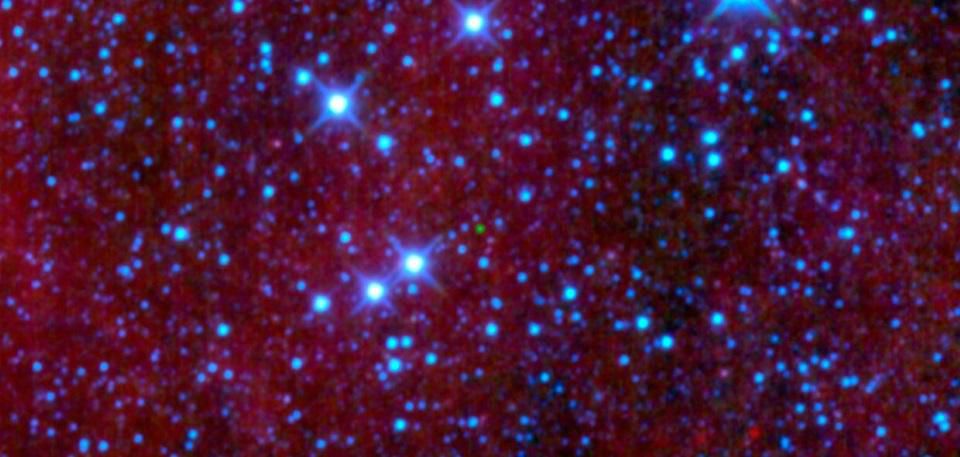Ask Ethan: what will happen when a star passes through the solar system?
- Transfer

70,000 years ago, a pair of brown dwarfs, known as the Scholz star , located just on the threshold of hydrogen fusion in the nuclei, passed through the Oort cloud of the solar system. Unlike the stars in this illustration, they were not visible to the human eye.
We are accustomed to consider our solar system a stable, calm place. Of course, from time to time we learn that the planets and other celestial bodies have kicked off a comet or an asteroid, but for the most part, everything remains constant. Even a rare interstellar visitor carries no particular risk, at least not for the integrity of a world like ours. But our entire solar system is orbiting through the galaxy, which means that it has hundreds of billions of chances for close interaction with another star. How often does this actually happen and what are the potential consequences of this? Our reader asks a question:
How bad will the consequences be if the star passes near the Sun? How big and how close should it go to pose a serious danger? How likely is such an event?Opportunities range from routine incidents in which several objects of the Oort cloud will go out of their way, to catastrophic - collisions with the planet or its release from the system. Let's see what really happens.

The density map of the Milky Way and the surrounding sky, which clearly shows the Milky Way, the Large and Small Magellanic Clouds , and, if you look closely, NGC 104 to the left of the Small Cloud, NGC 6205 just above and to the left of the galactic nucleus, and NGC 7078 just below. The total in the Milky Way contains about 200 billion stars.
According to our best estimates, the Milky Way contains from 200 to 400 billion stars. And although the stars are of very different sizes and masses, most of them (3 out of every 4) belong to red dwarfs: from 8% to 40% of the mass of the Sun. The size of these stars is less than solar: on average, about 25% of the diameter of the sun. And we also know approximately the size of the Milky Way: it is a disk about 2000 light years thick and 100,000 light years in diameter, with a central bulge of about 5000-8000 light years in radius.
Finally, relative to the Sun, a typical star moves at a speed of 20 km / s: about 1/10 of the speed at which the Sun (and all stars) move in an orbit in the Milky Way.

Although the Sun moves in the plane of the Milky Way at a distance of 25,000 - 27,000 light years from the center, the directions of the orbits of the planets of the Solar System are not aligned with the plane of the galaxy.
Such is the statistics on the stars in our galaxy. There are many details, nuances and pitfalls that we ignore, such as a change in density depending on whether we are in a spiral arm or not; the fact that there are more stars closer to the center than the closer to the edge (and our Sun is halfway to the edge); the orbital inclination of the Solar System with respect to the galactic disk; small changes, depending on whether we are in the middle of the galactic plane or not ... But we can ignore them because only using the values listed above allows us to calculate how often Galactic stars approach a certain distance to our Sun, and therefore how often you can expect close encounters or various collisions.

The distances between the Sun and many nearby stars are given precisely, but each star — even the largest of them — would scale to less than one millionth of a pixel in diameter.
We calculate this value very simply - we consider the density of stars, the cross-section of interest to us (determined by how close you want the star to come to ours), and the speed with which the stars move relative to each other, and then multiply it all to get the number of collisions per unit of time. This method of counting the number of collisions is suitable for everything from particle physics to condensed matter physics (for experts, this is essentially the Drude model), and is equally applicable to astrophysics. If we assume that in the Milky Way there are 200 billion stars, that the stars are evenly distributed over the disk (ignoring the bulge), and that the stars move relative to each other at a speed of 20 km / s, then by plotting the number of interactions from the distance to the Sun, we get the following: A graph showing how often the stars of the Milky Way will pass at a certain distance from the Sun. The logarithmic graph is on both axes, the distance is plotted along the y axis, and the typical x expectation of this event in years is along the x axis.

He says that on average, in the entire history of the Universe, we can expect that the closest distance that another star approaches the Sun will be 500 AU, or about ten times further than the distance from the Sun to Pluto. He also says that once a billion years we can expect the star to come to us at a distance of 1500 AU, which is close to the edge of the Kuiper dispersed belt . And more often, about once every 300,000 years, a star will pass at a distance of the order of a light year from us. A logarithmic representation of the solar system, extending to nearby stars, shows how far the Kuiper belt and Oort clouds are.

This is definitely good for the long-term stability of the planets in our solar system. From this it follows that over 4.5 billion years of our solar system’s existence, the chances that a star will approach any of our planets at a distance equal to the distance from the Sun to Pluto are approximately 1 in 10,000; the chances of a star approaching the Sun a distance equal to the distance from the Sun to the Earth (which would greatly damage the orbit and lead to an ejection from the system) are less than 1 in 1,000,000,000. This means that the probability of passing by We are a star from the galaxy, which can cause us serious inconvenience, terribly low. In the space lottery, we will not lose - it is very unlikely that, as long as nothing happened, something will happen in the foreseeable future.

The orbits of the inner and outer planets obeying the laws of Kepler. The chances that the star will pass at some short distance from us, and even at a distance comparable to the distance to Pluto, are extremely small.
But the cases of the passage of the star through the Oort cloud (located 1.9 light-years from the Sun), as a result of which the orbits of a huge number of ice bodies were violated, during this time about 40,000 had to accumulate. A lot of interesting things happen with this passage of the star through the Solar System , since two factors converge here:
- Objects of the Oort cloud are very weakly associated with the solar system, so even a very small gravitational push can significantly change their orbit.
- The stars are very massive, so even if the star passes at a distance from the object equal to the distance from it to the Sun, it will be able to kick it hard enough for its orbit to change.
From this it follows that every time we closely encounter a passing star, the risks increase that for, say, several million years after, we may encounter an object from the Oort cloud.

The Kuiper belt contains the greatest number of objects in the Solar System, but the Oort cloud, which is farther and dimmer, contains not only more objects - it is also more susceptible to disturbances from a mass passing by, such as another star. All Kuiper belt objects and Oort clouds move at extremely low speeds relative to the Sun.
In other words, we will not see the results of the effect of a passing star on icy comet-like bodies, which may fall inside the Solar System until some 20 next stars pass close enough to ours! And this is a problem, since the last star system, the star of Scholz (past 70,000 years ago) is already 20 light years away. However, from this analysis we can make an optimistic conclusion: the better our map of stars and their movements, which are located 500 light years away, the better we will be able to predict where and when Oort cloud objects will appear. And if we are concerned about the protection of the planet from objects that are thrown into the interior of our system by passing stars, then the acquisition of such knowledge is the obvious next step.

WISEPC J045853.90 + 643451.9, the green dot is the first supercold brown dwarf opened by the Wide-Field Infrared Survey Explorer space telescope, or WISE (Wide-Angle Infrared Survey Explorer). This star is located 20 light years away from us. To explore the entire sky and find all the stars that could pass near the Sun and bring storms to the Oort cloud, you need to look for 500 light years.
And for this you need to build wide-angle telescopes that can see dim stars at great distances. The mission of WISE has become the prototype of such a technique, but the distance at which it is able to see the dimmest stars, that is, the stars of the most common type, is strongly limited by its size and observation time. The infrared space telescope, which overlooks the entire sky, could mark our environment, tell us what can come to us, in what time, from what directions, and what stars have caused disturbances among the objects of the Oort cloud. Gravitational interactions occur constantly, even despite the huge distances between stars in space; the Oort cloud is huge, and we have a lot of time for objects to fly out past us and somehow influence us. For quite a long time, everything will happen
